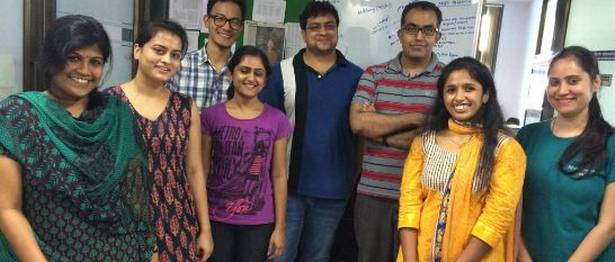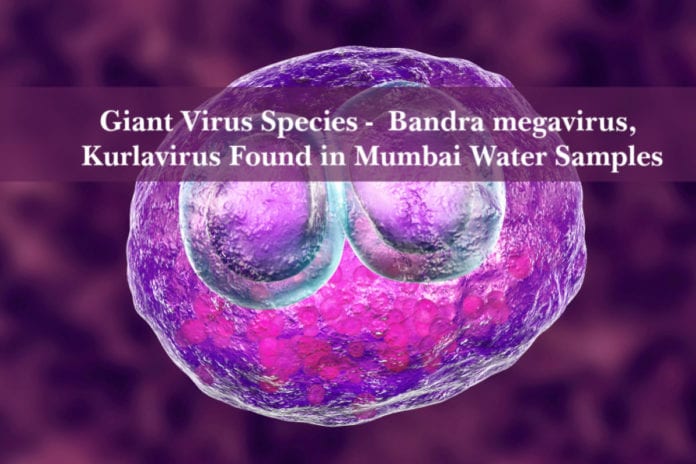Giant Virus Found in Mumbai Water Samples By IITB Scientists
A virus that too a Giant one, sounds horrific right? IIT Bombay Scientist has found giant virus species lurking in water samples collected in Mumbai. Though the virus species identified are all non-pathogenic, so Mumbaikars you can take a sigh of relief! Nothing to worry here.
The team has discovered Bandra megavirus (BMV), a novel, and so far, the largest giant virus reported from India. In 465 nanometer, it is countless folds smaller than the depth of hair but several times larger than other germs. Other new giant virus species discovered are — Powai lake megavirus (PLMV), Mimivirus bombay (MVB) and Kurlavirus (KUV).
The scientific community has been on their toes for the lookout of species related to those of initial Giant Virus growing within amoebae discovered in a cooling tower in England in 1992. The same type of giant virus species has been discovered in Indian Environment now, in Mumbai.
It’s hypothesized that germs that are giant hold the key to understanding the development of organisms from simpler forms. The DNA of giant viruses has genomic signatures of bacteria, eukaryotes (cells of higher organisms) and other viruses. They’re with
numerous life forms showing similarity in DNA sequence like mosaics.Scientists feel that the massive genome size of these viruses enables the transfer of information across different life forms. When a virus infects a host, it occasionally picks up gene(s) from the practice of building more viral particles using the host’s cellular machinery.
These genes can be passed onto different hosts that the virus infects in the future. With some luck genes may confer a benefit to the organism, and as time passes, the forces of evolution act upon it, giving rise to the growth of new species.
The order in which giant viruses acquired genetic sequences from their hosts is difficult to determine and currently not known. However, by introducing genes that are new, these viruses play a part in their own evolution and that of the organisms, inhabiting the ecosystem.
In a study spanning five years, researchers from Indian Institute of Technology, Bombay (IITB) have found several giant viruses in water samples from wastewater treatment plant of a dairy unit and pre-filtered water by a national water purifier. The group found almost 20 viruses using modern methods of identification and isolation and explored the presence of germs.
“Although the genome or total genetic material in BMV and PLMV is similar, their organization is different,” explained Dr. Anirvan Chatterjee, one of the lead investigators. “We discovered a routine within the arrangement – core protein genes were mostly located in the middle portion of the genomes, while the endings placed less critical genes.” This pattern has also been observed in other Giant Viruses in research across the world. The similarity of hereditary material is used as a proxy of familiarity of any two species. The more similar the genomes, the more related they are believed to be and hence more inclined when tracing their evolution, to share a common ancestor.

Photo Credit: India Science Wire
The study supports the claim that giant germs may exist everywhere, but we have become able to detect them. “However, there isn’t enough evidence to suggest that they’re directly linked to infections in humans,” said Dr. Anirvan while talking to India Science Wire.
The study used a metagenomic approach in which scientists didn’t concentrate on a certain kind of organism but instead looked for all kinds of microorganisms from the samples.
The study involved Big Data analytics completed in cooperation with other investigators from the Technical University of Denmark. This allowed them to find microbial species like viruses which would have been discovered due to their incompatibility with artificial and techniques surroundings used for culturing in labs.
The research team comprised of Dr. Anirvan Chatterjee, Rajesh Yadav & Professor Kiran Kondabagil from IIT Bombay and Thomas Sicheritz-Pontén from AIMST University, Malaysia. The results of the study have been published in the journal Scientific Reports.
Source: India Science Wire































Are not non pathogenic?? U mean they are pathogenic??
(1st paragraph)
Apologies for the mistake. We have rectified it immediately